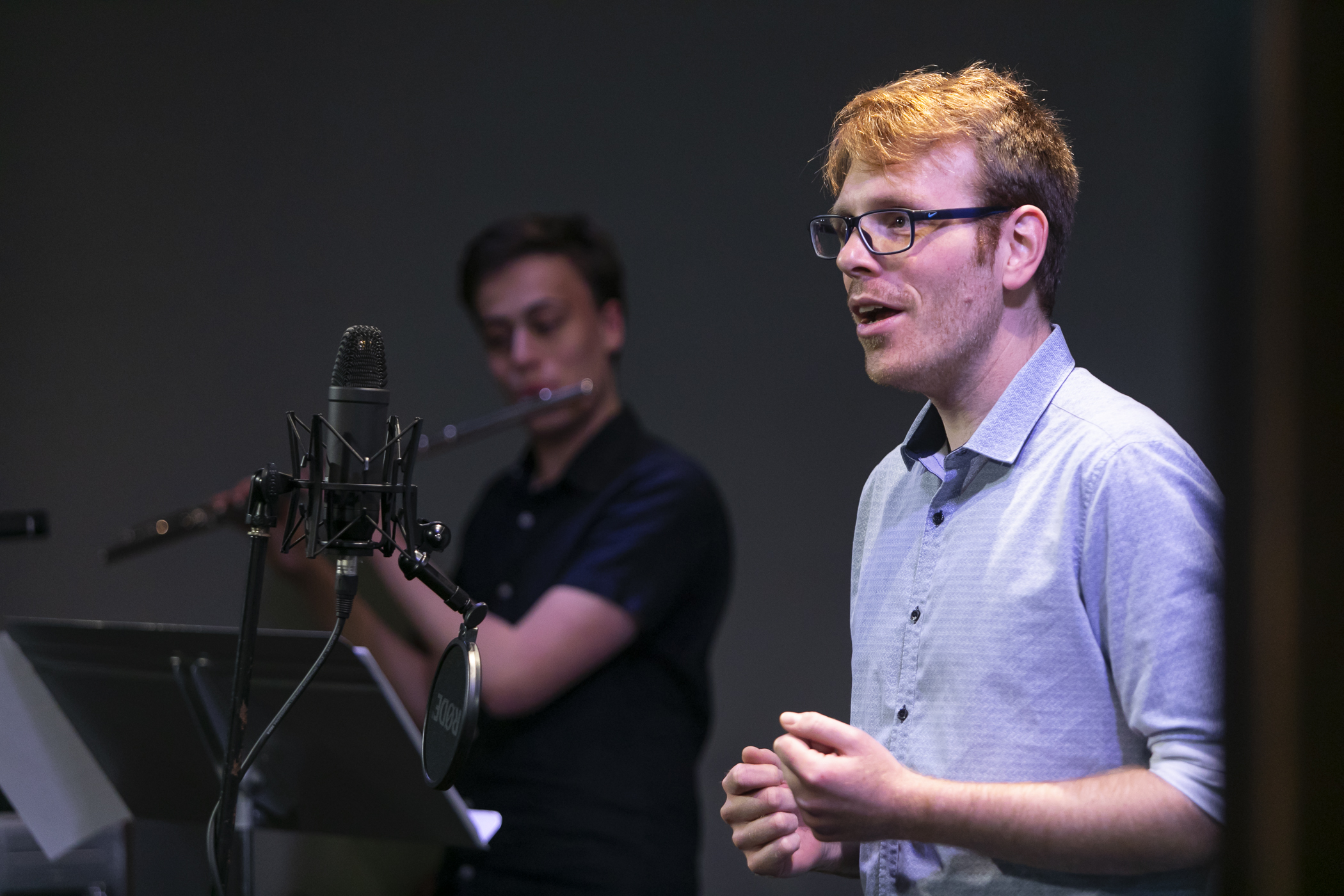Three effective voice warm-ups to add to your singing routine
Before last month’s studio concert commenced, our singers participated in a group warm-up, which helped them release more nerves, prepare their voices for their individual performances, and feel supported by their fellow singers.
Vocal warm-ups are essential before any singing, whether it’s practice, performing, or after a cold or other respiratory illness.
You need around 15 to 20 minutes for this type of vocal maintenance, so it’s easy to fit a few warm-up sessions into your week. Here, we’ll look at three voice warm-ups our studio singers love:
- Patterns across intervals of a fifth
- 5-note scales in triplet patterns
- Triad patterns that extend breath control
These exercises are for experienced singers, not beginners, because, while they may seem easy, they require a singer to work specific target skills, and therein lies the challenge. I’ve suggested target skills with each exercise below.
Start each exercise around your mid voice range. As you ascend, be sure to adjust your vocal weight. As you descend, allow your voice to shift to a lower register on its own, rather than taking your head voice down or pushing into your lower sound. This helps massage your vocal cords into use. You can then gradually increase your level of strenuousness.
1. Humming across fifths
Sliding between the two notes, keep lips relaxed, not pursed or holding on to the sound. Feel the vibrations in your face, near your nose and lips. Keep your jaw floating and your tongue resting at the bottom of your mouth. Breath flow initiates sound flow in this exercise and is the target skill. Your inner ear detects the initial note and, while humming the first note, pinpoints the fifth below. Pitch accuracy is another target skill in this exercise.

2. ‘Nee-uhm’: 5-note down scales using triplet patterns
This targets a raised soft palate. The consonants N and M will lower the soft palate and your goal is to quickly sing into the following EE and sustain the pitch. In popular music and operatic arias, this ‘smearing’ skill is important to work on. If your tone is jerky, you need to find steady, easy breath flow.
Your tongue gets a workout in this exercise. Check that it’s moving forward toward the hard palate behind your top teeth. The N needs to be cleanly positioned and the first note accurately pitched. If you approach the note from underneath, you will be out of tune.

3. ‘Fly away exercise’ across thirds
This exercise targets agility, pitch and rhythmic accuracy, plus steady breath flow for the long phrase.
The pitch changes here are detected in your inner ear and made at a high-speed, establishing fundamental legato (smooth) singing. This exercise lays the foundations for faster patterns, melismatic passages in songs and physical efficiency for singing.
The Y in ‘fly’ is treated as a vowel and needs to be sustained on the pitch. Start the exercise using a slightly elongated FL. This sets up a steady sound flow on the vowel . Maintain a steady breath flow to keep the breath moving as you sing down and up the pitches then, with the change of vowel and word, the tongue gently moves forward into the A and the lips round for the W of ‘way’. Gradually, you will build a reliable cooperation between your breath flow and vocal fold closure for an easy onset and vocal tract shaping. It can take time to master this challenging exercise in your warm up routine, but it’s well worth it.

These exercises benefit singing of most genres but, to do them well, you need guidance from an expert singing teacher like Kathleen Connell. Our studio has singing lessons to suit all experience levels and schedules. Browse the in-person or online options, or call 0402 409 106.




